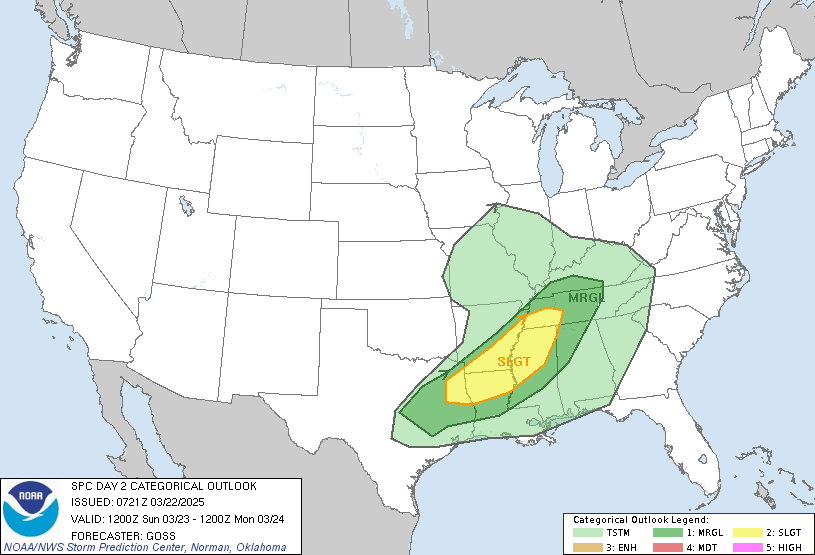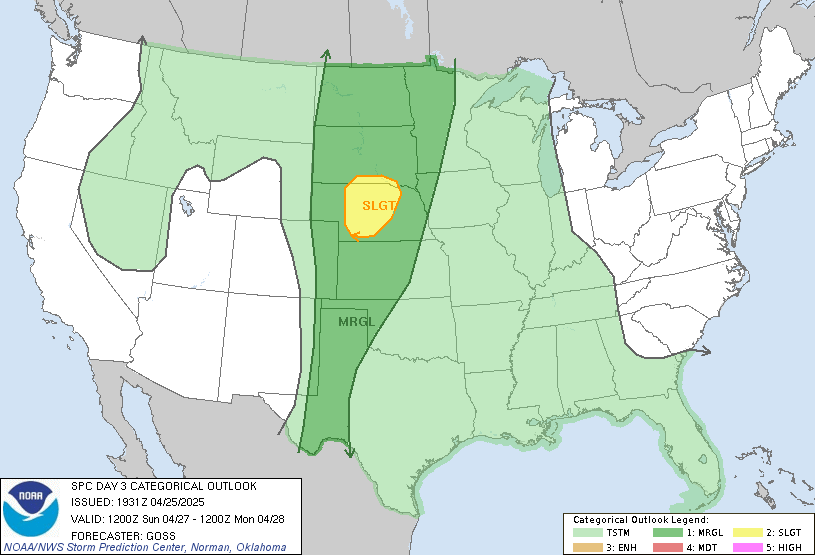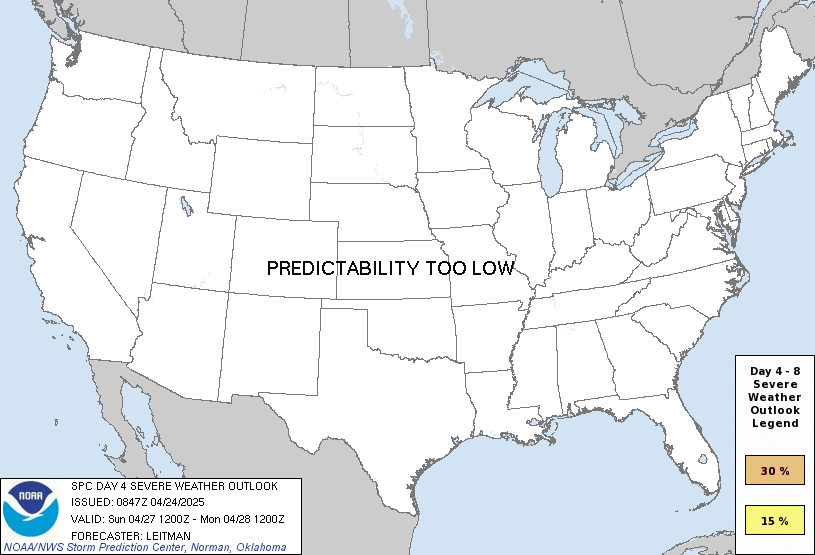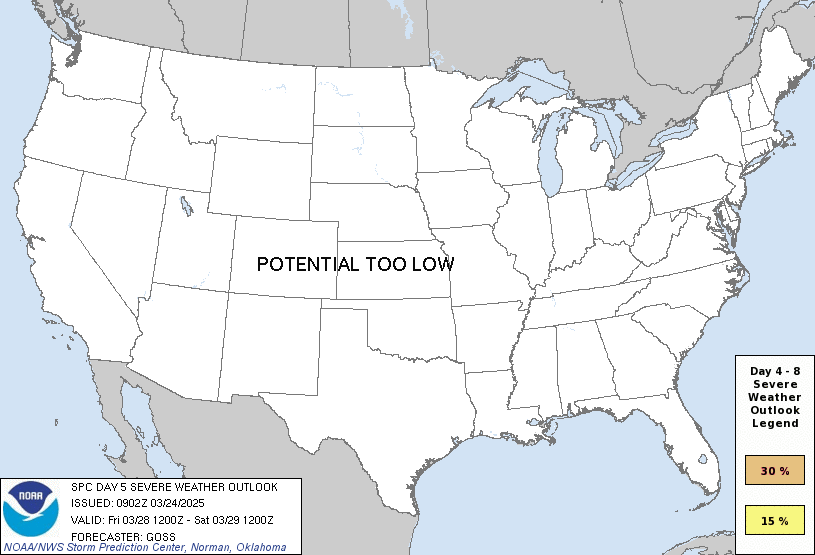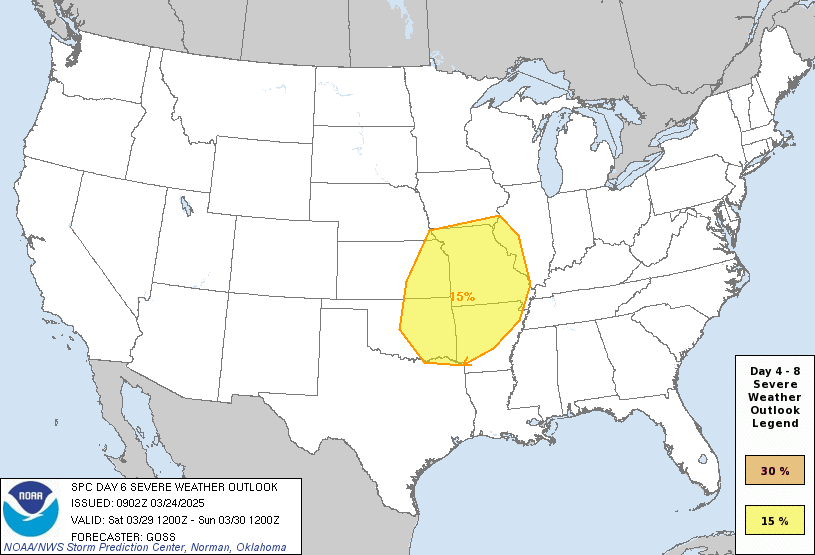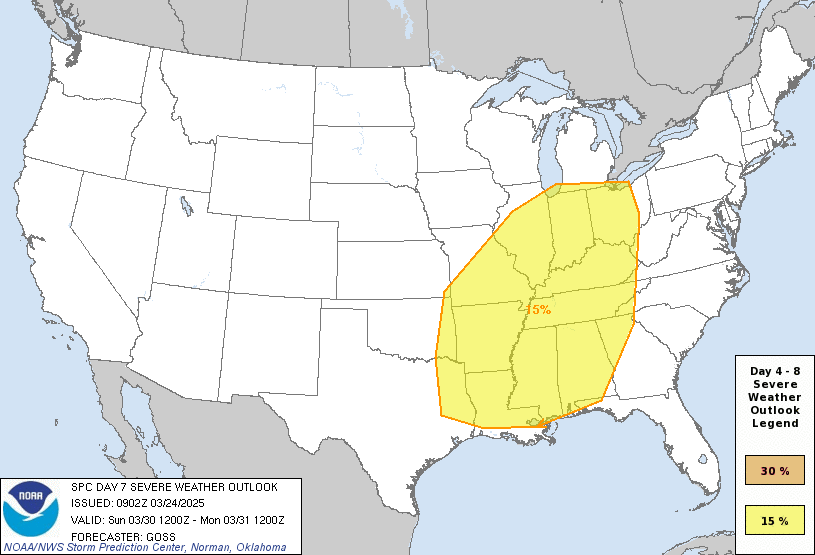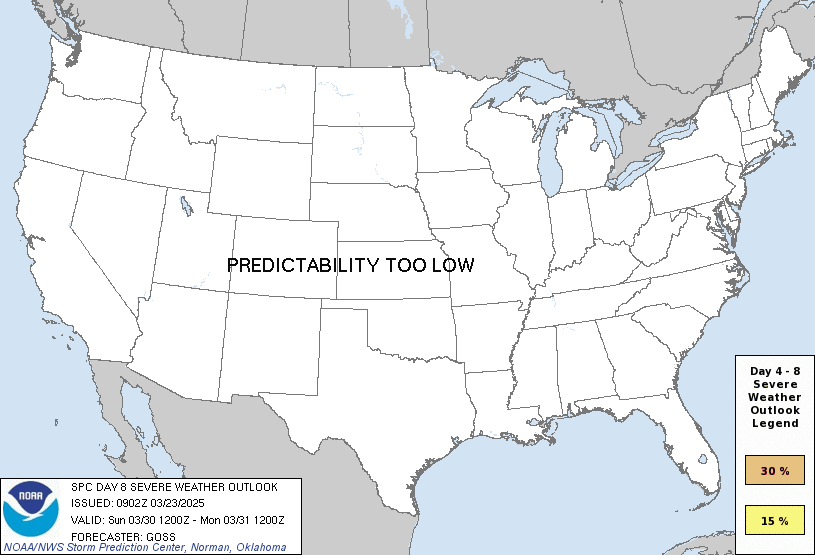Severe Weather Outlook
Hayley here
- Do you like
lofi music
whatever music Hayley put on
and terrifyingly loud computer voices? Then stop by the 24/7 ish severe weather live stream!
* stats delayed and were probably not accurate to begin with
National Severe Weather Outlook
Overview of the threat for the next few days
Clicking any of the above images will take you directly to that outlook's detail page. Or you can view all severe outlooks on one page →
Overview of the threat for the next few hours
Severe Weather Watches (shown on the image below) indicate potential threats from now through the next few hours.
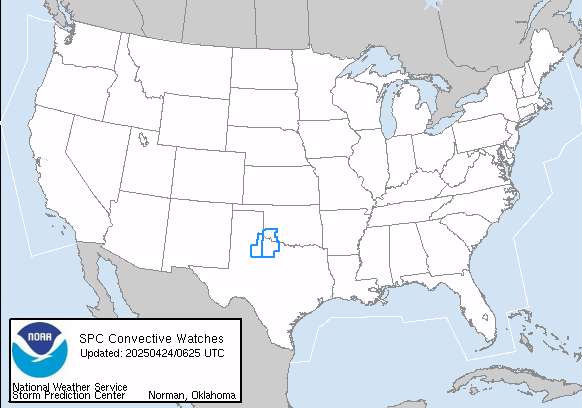
View more details on the watches page.
National Risk Overview
- Tuesday, December 30
- TORNADO: low
- HAIL: low
- WIND: low
- Wednesday, December 31
- TORNADO: low
- HAIL: low
- WIND: low
- Thursday, January 1
- ANY SEVERE: low
- Friday, January 2
- ANY SEVERE: predictability too low
- Saturday, January 3
- ANY SEVERE: predictability too low
- Sunday, January 4
- ANY SEVERE: potential too low
- Monday, January 5
- ANY SEVERE: potential too low
- Tuesday, January 6
- ANY SEVERE: potential too low
Your Severe Outlook
Hey, it looks like your location wasn't detected.
Drag the marker on the map and we'll show you the severe weather potential for a given location.
Hi, I'm Hayley. Did you know that I run this site out of my own pocket? So if you'd like to help out and you're already planning on buying something off of Amazon, why not use our Amazon Severe Weather Outlook link before you buy and we'll get a tiny portion of your purchase.
About Severe Weather Outlook . com
SWO started as a spinoff project of wickedwx, but has since replaced the site.
- tornado hq - live severe weather warnings
- cyclocane - hurricanes/typhoons/cyclones
- tornado solitaire - play cards while you monitor the US severe weather threat
- tertremo - live view of earthquakes around the world
- earthquake solitaire - get live earthquake updates as you play your favorite card game



